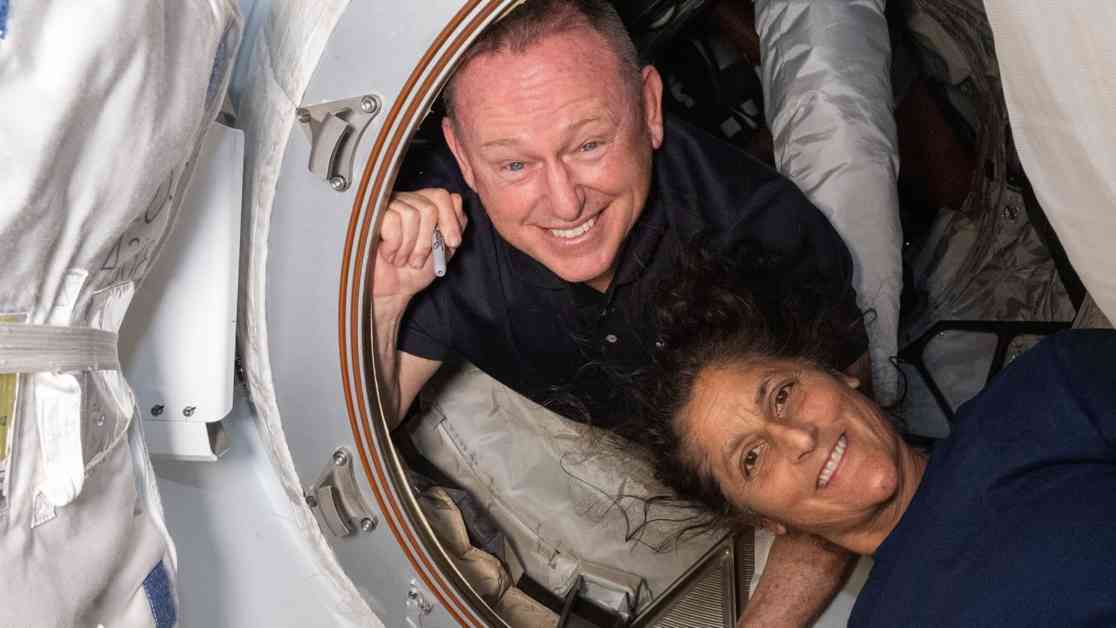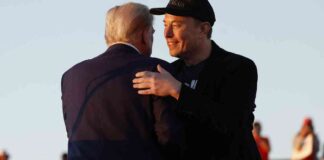NASA astronauts Butch Wilmore and Suni Williams have been eagerly awaiting their return flight aboard Boeing’s Starliner capsule “Calypso” from the International Space Station. However, their return has been delayed indefinitely as Boeing and NASA work to address issues with the spacecraft’s thrusters that failed during docking. This delay has left both astronauts and the teams at NASA and Boeing in a state of uncertainty as they analyze data and deliberate on the best course of action.
Thruster Troubles and Safety Concerns
The thrusters on the Starliner capsule are crucial for its safe return from the ISS. The propulsion system plays a vital role in the deorbit burn process, which is essential for reentry into Earth’s atmosphere. However, with multiple thruster failures during docking, NASA is hesitant to greenlight the return of the spacecraft with the astronauts on board.
NASA Associate Administrator Ken Bowersox expressed concerns about the thruster system’s reliability, stating, “Our big concern is having a successful deorbit burn — making sure that the [propulsion] system works just the way it needs to all the way through the deorbit burn.” This uncertainty has forced NASA to carefully evaluate the safety of returning the Starliner crewed or empty.
Boeing has been working to address these concerns and has made assurances to NASA about the spacecraft’s safety. The company has emphasized the extensive testing that has been conducted on the thrusters and their confidence in the system’s functionality. However, the final decision rests with NASA, and a Flight Readiness Review is scheduled to take place after a final round of data analysis is completed by Aug. 23.
Implications for NASA and Boeing
The delayed return of the Starliner capsule has significant implications for both NASA and Boeing. Originally intended to be a nine-day mission, the extended stay at the ISS has disrupted NASA’s plans for alternating missions between Boeing and SpaceX to the space station. The setback in Boeing’s progress in NASA’s Commercial Crew program has raised concerns about the company’s future involvement in space missions.
With over $1.5 billion in losses already incurred, Boeing’s reputation as a reliable spaceflight provider is at stake. The company’s credibility hinges on its ability to address the issues with the Starliner capsule and ensure the safe return of the astronauts. The decision-making process at NASA will play a crucial role in determining the future of Boeing’s partnership with the agency.
Joe Acaba, leader of NASA’s astronaut office, emphasized that Wilmore and Williams are seasoned test pilots who understand the risks associated with spaceflight. Despite the challenges faced during the mission, the astronauts remain committed to completing their tasks and following the agency’s guidance.
Trust in the Decision-Making Process
As the teams at NASA and Boeing continue to assess the situation, the astronauts aboard the Starliner capsule remain confident in the agency’s decision-making process. Russ DeLoach, head of NASA’s spaceflight safety office, reiterated the trust that Wilmore and Williams have in the agency’s expertise.
“Wilmore and Williams will do their job as astronauts,” DeLoach stated, emphasizing the professionalism and dedication of the astronauts. The rigorous training and preparation that astronauts undergo prepare them for the challenges of spaceflight, including unforeseen technical issues like those encountered with the Starliner capsule.
The decision on whether to return the Starliner crewed or empty will ultimately be made by NASA Administrator Bill Nelson. The agency’s commitment to ensuring the safety of the astronauts and the success of the mission is paramount in the decision-making process.
Looking Ahead
As the deadline for the final decision approaches, all eyes are on NASA and Boeing to determine the fate of the Starliner capsule and its crew. The ongoing analysis of data and thorough review of the spacecraft’s systems will be critical in determining the next steps for the mission.
Boeing’s dedication to addressing the technical issues with the Starliner capsule is evident in its extensive testing and assurances to NASA. The company’s reputation as a leader in space exploration is on the line, and the successful return of the astronauts is crucial to maintaining its standing in the industry.
NASA’s commitment to the safety of its astronauts and the success of its missions remains unwavering. The agency’s thorough evaluation process and adherence to strict safety protocols ensure that every decision made is in the best interest of the astronauts and the success of the mission.
As Wilmore and Williams await their return from the ISS aboard the Starliner capsule “Calypso,” the future of the mission hangs in the balance. The resolution of the technical issues with the spacecraft and the decision on its return will determine the next chapter in NASA’s space exploration efforts.






















